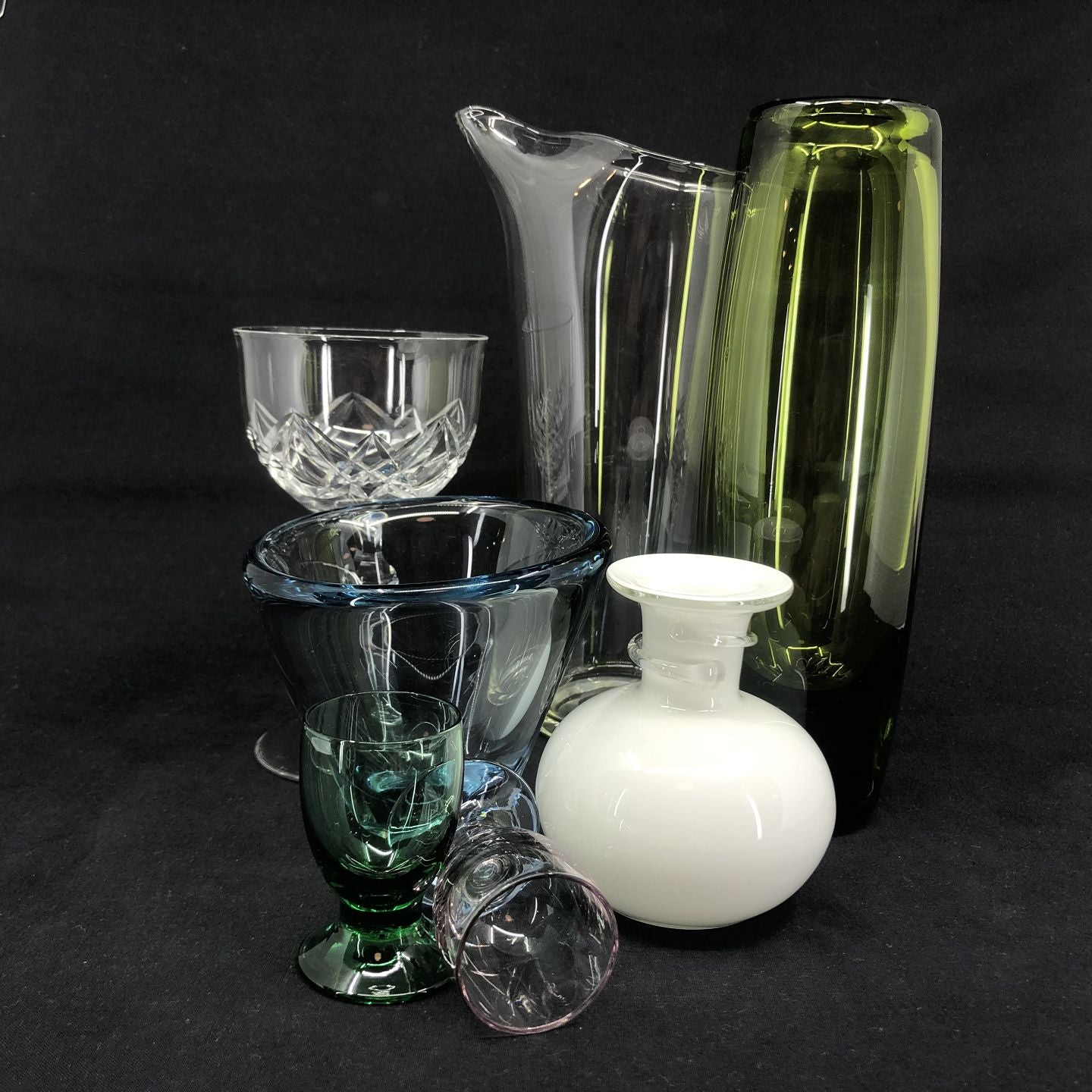
About Holmegaard Glasværk: Holmegaard's history
Danish design has long had an international reputation, and some of the most popular glass models are also manufactured within our country's borders.
Holmegaard Glasværk is among the most recognized glassworks in the Nordics. It is also one of the oldest in Denmark. The glassworks was founded in 1825, and until 1831 the company specialized exclusively in bottles. From 1832, household glass was also produced at Holmegaard, and since then the factory has produced a wide range of different types of glass, including art and industrial glass. When Holmegaard issued a catalog of new types of glass in 1853, these included pocket larks, cluck bottles, hyacinth glasses and, of course, drinking glasses. Holmegaard Glasværk was originally located in Fensmark, and the factory was built in 1972 according to drawings by Svenn Eske Kristensen.
Over time, several well-known artists have left their mark on Holmegaard's production. Jacob E. Bang was Denmark's first industrial designer, and he was employed by Holmegaard in 1925. In the years between 1928 and 1941, he served as the glassworks' artistic director, and from 1942 to the 1990s, the same position was held by the legendary designer Per Lütken.
In 1985, Holmegaard Glasværk was, among other things, merged with Royal Copenhagen, and twenty years later the works were sold to the development company Ibco, which planned to transform the works into an experience centre. However, the plan was never implemented, and in 2008 Rosendahl A/S took over Holmegaard's bankruptcy estate. The glass factory's old building was forcibly auctioned in 2010 and reopened in 2020 as Holmegaard Værk, where the majority of Holmegaard's glass collection is today exhibited.
Since the beginning, Holmegaard has distinguished itself by perfect functionality and timeless designs. Therefore, it is not surprising that Holmegaard's production has long been sought after by both Danish and foreign glass collectors.
Holmegaard Glasværk is among the most recognized glassworks in the Nordics. It is also one of the oldest in Denmark. The glassworks was founded in 1825, and until 1831 the company specialized exclusively in bottles. From 1832, household glass was also produced at Holmegaard, and since then the factory has produced a wide range of different types of glass, including art and industrial glass. When Holmegaard issued a catalog of new types of glass in 1853, these included pocket larks, cluck bottles, hyacinth glasses and, of course, drinking glasses. Holmegaard Glasværk was originally located in Fensmark, and the factory was built in 1972 according to drawings by Svenn Eske Kristensen.
Over time, several well-known artists have left their mark on Holmegaard's production. Jacob E. Bang was Denmark's first industrial designer, and he was employed by Holmegaard in 1925. In the years between 1928 and 1941, he served as the glassworks' artistic director, and from 1942 to the 1990s, the same position was held by the legendary designer Per Lütken.
In 1985, Holmegaard Glasværk was, among other things, merged with Royal Copenhagen, and twenty years later the works were sold to the development company Ibco, which planned to transform the works into an experience centre. However, the plan was never implemented, and in 2008 Rosendahl A/S took over Holmegaard's bankruptcy estate. The glass factory's old building was forcibly auctioned in 2010 and reopened in 2020 as Holmegaard Værk, where the majority of Holmegaard's glass collection is today exhibited.
Since the beginning, Holmegaard has distinguished itself by perfect functionality and timeless designs. Therefore, it is not surprising that Holmegaard's production has long been sought after by both Danish and foreign glass collectors.















